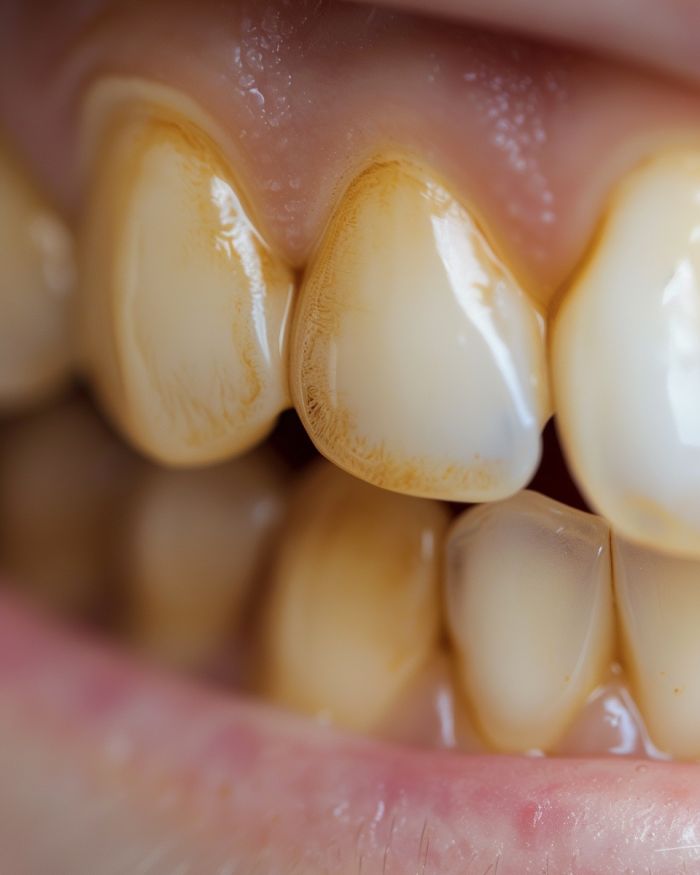The health and appearance of our teeth have a profound impact on both our overall wellness and our self-confidence. A bright, healthy smile can boost our self-esteem, help us make strong first impressions, and even influence how we interact in social and professional settings. While regular dental check-ups and cleanings are undeniably essential, many people overlook the power of at-home oral care routines. What’s even more surprising is that several effective methods for cleaning and whitening teeth can be found in your own kitchen, using affordable and natural ingredients.

If the idea of improving your dental health and whitening your teeth without expensive treatments sounds appealing, then you’re in the right place. Many of these remedies aren’t widely advertised by dental professionals, yet they offer practical, cost-effective ways to manage common oral issues like tartar buildup and surface stains. These natural approaches can easily be incorporated into your daily or weekly routine and require no fancy equipment or complicated steps—just consistency and care.
One of the most popular home remedies for both teeth whitening and tartar control involves the use of baking soda and hydrogen peroxide. This combination has been used for years because of its ability to break down plaque and gently polish the surface of the teeth. To create this paste, mix one tablespoon of baking soda with two tablespoons of hydrogen peroxide until you get a smooth, spreadable texture. Brush your teeth with this mixture for about two minutes, making sure to cover all areas evenly. After brushing, rinse your mouth thoroughly with water to remove any residue. This can be done a few times a week, but it’s important not to overuse it, as excessive abrasion can wear down enamel over time.
Another time-tested method is oil pulling, a practice that dates back centuries and originated in Ayurvedic medicine. This involves swishing a tablespoon of oil—typically coconut or sesame oil—in your mouth for about 10 to 15 minutes. While this may seem like a long time, the process helps draw out toxins, bacteria, and debris that accumulate in the mouth. It also aids in reducing plaque formation, freshening breath, and supporting gum health. After swishing, spit the oil into a trash can (not the sink, to avoid clogging), and rinse your mouth with warm water. Many people who commit to oil pulling several times a week report noticeable improvements in both the color and cleanliness of their teeth.
White vinegar is another household item that can be used to tackle oral bacteria and tartar. To make a natural mouth rinse, mix one tablespoon of white vinegar, a pinch of salt, and a cup of warm water. Gargle and swish this mixture for about 30 seconds to a minute before spitting it out. While this rinse can help kill germs and loosen tartar, it should only be used occasionally. Because vinegar is acidic, frequent use could potentially weaken the enamel over time. Limiting it to once or twice a week ensures effectiveness without unwanted side effects.
A lesser-known but effective combination involves aloe vera and vegetable glycerine. Aloe vera is known for its healing and antibacterial properties, while glycerine acts as a gentle cleanser. Combine one teaspoon of aloe vera gel, four teaspoons of glycerine, a pinch of baking soda, and a cup of water to create a paste. Use this mixture to brush your teeth gently. Over time, this remedy can help reduce tartar buildup and promote a whiter, healthier smile. The added benefit is that aloe vera also supports gum health, which is an often overlooked but critical part of oral hygiene.
What you eat can also have a big impact on your dental health. Crunchy fruits and vegetables like apples, carrots, and celery do more than just nourish your body—they act as natural scrubbers for your teeth. Their firm texture helps to physically remove food particles and plaque from the surface of your teeth as you chew. Eating these foods regularly not only supports overall health but also assists in maintaining a cleaner mouth between brushings.
Another fun and tasty remedy involves strawberries. These berries are naturally rich in malic acid, which is known for its ability to break down stains on the enamel. To create a natural whitening paste, mash a ripe strawberry and mix it with a bit of baking soda until it forms a spreadable texture. Apply the paste to your teeth using a toothbrush or your finger, leave it on for five minutes, then rinse thoroughly and brush as usual. This method is best used occasionally, as the acidity in strawberries could affect enamel if used too often.
Activated charcoal has also gained popularity as a natural teeth-whitening agent. Its porous structure allows it to bind to impurities and surface stains on your teeth. To use it, wet your toothbrush, dip it into activated charcoal powder, and gently brush your teeth for two to three minutes. Rinse thoroughly with water until all the charcoal is removed. While this method can make quite a mess, many people find it effective in lifting stubborn stains and restoring brightness to their smile. As with other abrasives, it’s important to use this method in moderation to protect the enamel.
These natural remedies offer accessible, budget-friendly alternatives to expensive dental treatments. However, it’s important to remember that they should complement—not replace—your regular oral hygiene routine, which includes brushing twice daily with fluoride toothpaste, flossing, and attending dental checkups. By adding some of these tips to your weekly routine, you can enhance the health and appearance of your teeth in a holistic and natural way.
Consistency and moderation are key. Not every method will work the same for everyone, so feel free to experiment with what suits your needs and comfort level. The goal is to maintain a healthy mouth and a bright smile without relying solely on costly professional services. With a little effort and some natural ingredients, achieving a beautiful smile can be simple, affordable, and rewarding.





